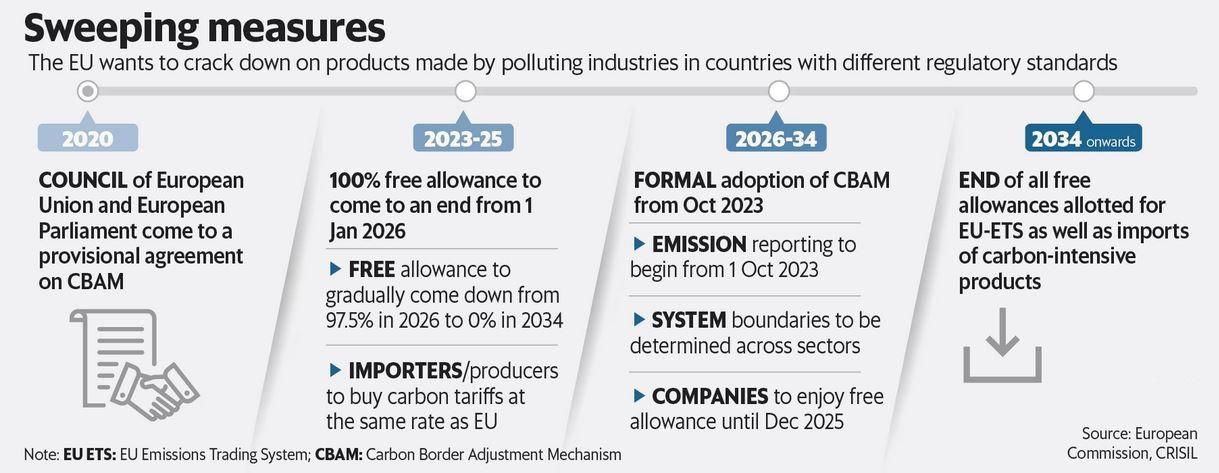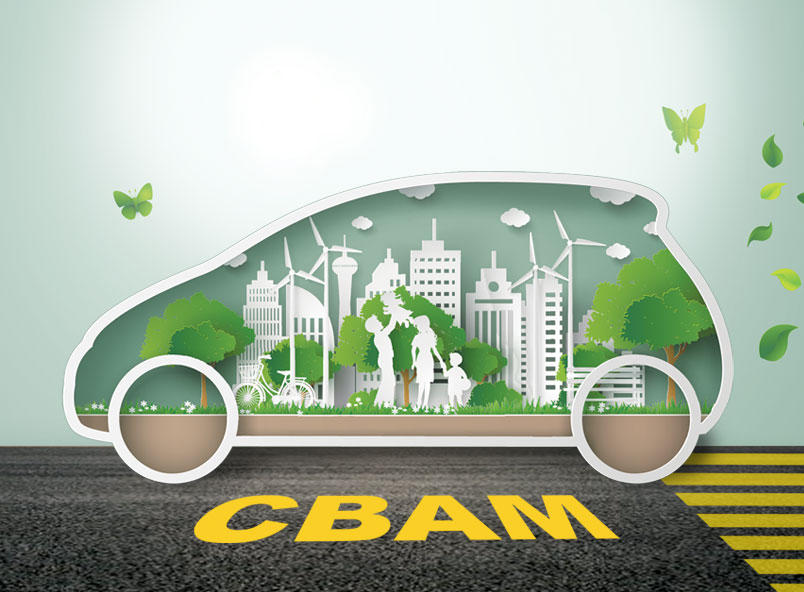The European Union’s proposed Carbon Border Adjustment Mechanism (CBAM) has stirred controversy, with India’s Commerce and Industry Minister strongly criticizing it as “ill-conceived.”
Understanding the Carbon Border Adjustment Mechanism (CBAM)

- Proposed by the European Union (EU): The EU aims to reduce carbon emissions from imported goods and prevent competitive disadvantages against countries with weaker environmental regulations.
Objectives
-
- Reduce carbon emissions from imported goods.
- Promote a level playing field between the EU and its trading partners.
- Protect EU companies that have invested in green technologies.
How CBAM Works
-
- Coverage: Applies to imported goods that are carbon-intensive.
- Integration: Integrated with the EU’s Emissions Trading System (ETS), which currently covers industries like power generation, steel, and cement.
- Implementation: CBAM taxes imposed on the carbon content of imported goods at the border, based on the carbon price in the EU ETS.
- Exemptions: Possible exemptions for countries with comparable carbon pricing systems.
- Revenue Use: Revenue generated from CBAM taxes could fund the EU’s climate objectives, including climate-friendly investments and support for developing countries’ climate efforts.
Impacted Parties under CBAM
- Countries: Non-EU countries exporting carbon-intensive goods to the EU, including India.
- Items Covered: Initially includes iron and steel, cement, aluminum, fertilizers, and electric energy production.
- Scope Expansion: The CBAM may extend to cover other sectors in the future.
Advantages of CBAM
- Encourages non-EU countries to adopt stringent environmental regulations, reducing global carbon emissions.
- Prevents carbon leakage by discouraging companies from relocating to countries with weaker environmental regulations.
- Generates revenue for supporting EU climate policies.
Challenges and Concerns with CBAM
- Difficulty in accurately measuring carbon emissions of imported goods, particularly for countries lacking comprehensive carbon accounting systems.
- Potential for trade tensions with the EU’s trading partners, especially if retaliatory measures are implemented.
Consequences for EU Manufacturing
-
The European auto sector, particularly steel and aluminum usage, could be severely affected by CBAM.
-
Opportunity for India: India sees this as an opportunity to develop a robust auto sector, leveraging cost advantages in the global market.
India’s Response and Carbon Tax Strategy
-
Counteractive Measures: India plans to neutralize the impact of the EU’s carbon tax by imposing its own.
- Investing in Green Energy: Revenue from India’s carbon tax will support the country’s green energy transition, helping exporters shift to cleaner energy and reduce their carbon footprint.
-
Negotiations with EU: The Indian government is engaged in dialogues with EU counterparts regarding the levy’s fairness and pricing disparities.
Find More News on Economy Here



 Union Budgets 2024-25 Related FAQs Quest...
Union Budgets 2024-25 Related FAQs Quest...
 Union Budget 2024-25: Complete Budget An...
Union Budget 2024-25: Complete Budget An...
 Key Highlights of the Union Budget 2024-...
Key Highlights of the Union Budget 2024-...
